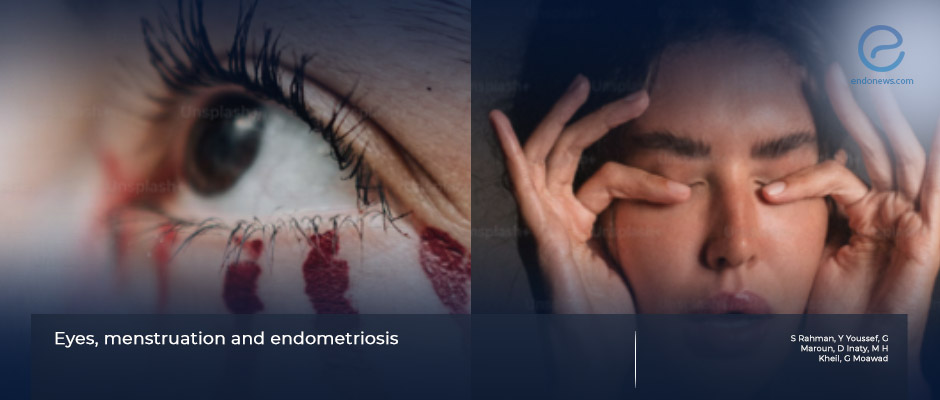Menstruating eye: Very rare but possible
Oct 19, 2023
Review study sheds light on rare cases and causes of haemolacria and ocular menstruation
Key Points
Highlight:
- Ocular vicarious menstruation or ocular endometriosis are very rare phenomena and a comprehensive evaluation of the patients is needed to rule out other disorders before reaching a definitive diagnosis.
Importance:
- The gold standard method to diagnose endometriosis which is the histological evaluation of the tissue may not work in ocular endometriosis because of the site of the lesions.
What's done here:
- This is a comprehensive literature review of all the reported cases of ocular vicarious menstruation and ocular endometriosis.
- The authors aimed to evaluate the characteristics, presentations, and treatment of the cases.
Key results:
- Four cases of vicarious menstruation have been reported to date after the exclusion of other pathologies.
- Four cases of ocular endometriosis included two cases with cutaneous endometriosis on the eyelids and two with nasolacrimal endometriosis.
- The animal model studies which aimed to identify a relationship between the eye and endometriosis showed the ability of the endometrial tissue to grow in the ocular environment.
- The human studies showed links between cyclical hormonal changes and the ocular system.
- The treatment methods changed depending on the site of the lesions and the preference of the patients and included surgical or medical options.
Lay Summary
Extragenital cyclical bleeding during a menstrual cycle is called vicarious menstruation and it is mostly reported to be seen in the nasal mucosa but can involve any other organ such as the lungs, stomach, kidney, etc. Endometriosis is a common cause of vicarious menstruation in which endometriotic tissue reaches extragenital places either via the hematogenous or lymphatic spread. The eye is one of the rarest sites of extra-pelvic endometriosis.
In their review, Rahman et al. from the US and Lebanon intended to evaluate the characteristics of all ocular endometriosis and ocular vicarious menstruation cases in the literature. The article was published in the June 2023 issue of the journal "Facts, Views & Vision in Obstetrics, Gynecology and Reproductive Health".
There were four cases of vicarious menstruation in the literature. All of the other pathologies that would cause a bleeding disorder were excluded in these patients before reaching the diagnosis. The authors stated that the cornea responds to the changing cyclical hormone levels, which may be causing increased vascular permeability, hence the bleeding. Researchers then described four cases of ocular endometriosis, two with nasolacrimal involvement and two with cutaneous (eyelid) involvement one of which happened to be a post-menopausal patient. They then went on to describe the studies that were performed to find a pathophysiological explanation and a link between the eye and endometriosis. Animal models showed that the endometrial tissue had its own neurogenic capabilities and the ocular environment was able to maintain endometrial tissue growth. Human studies searched for effects of the hormonal changes on the ocular system and, relationships between tear production and dry-eye syndrome in patients with ocular endometriosis.
The authors explained that the cause of haemolacria which means blood in tears should be assessed comprehensively to rule out any lesions, masses, infections, inflammatory or vascular disorders before reaching a diagnosis of ocular endometriosis/vicarious menstruation. Even though the gold standard of endometriosis is through histological sampling, because of the site, it was concluded that clinical presentation and the presence of pelvic endometriosis are important for a diagnosis of ocular endometriosis.
To conclude, the treatment choices explained for ocular endometriosis vary between surgical interventions and hormonal medications depending on the site of the lesion and the patient’s choice.
Research Source: https://pubmed.ncbi.nlm.nih.gov/37436046/
vicarious menstruation haemolacria ocular endometriosis endometriosis

